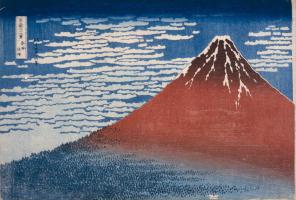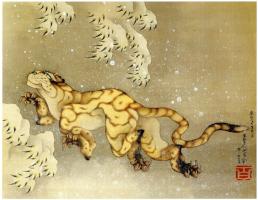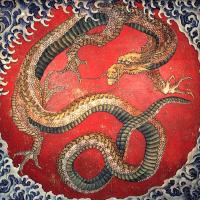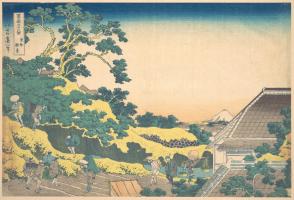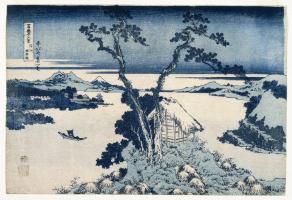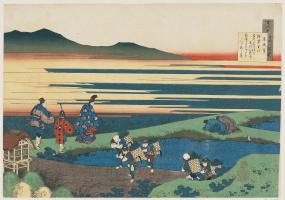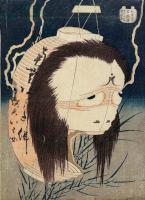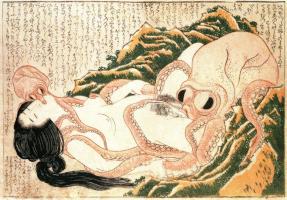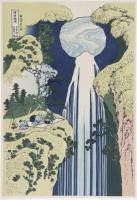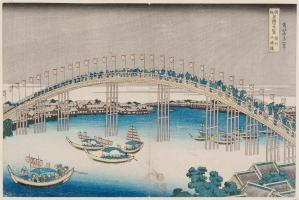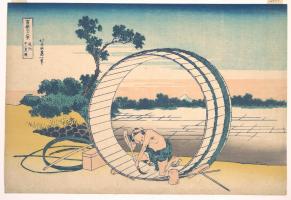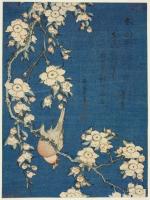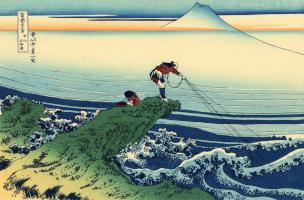Katsushika Hokusai
Hokusai was responsible for a phenomenal 30,000 works of art. He lived for nothing else and was driven to perfect his style with every new undertaking. Between the ages of sixty-four and seventy-two he had a burst of creativity that resulted in several major series of woodblock prints, including The Thirty-Six Views of Mount Fuji.
As a youth, Hokusai was on a constant quest for his artistic niche. After a relatively long period under Katsukawa Shunshim he left the studio following his master’s death and — ever curious — investigated what other schools had to offer. In the process, he came across examples of art displaying a distinct western influence that had originally filtered through via the Dutch trading post in Nagasaki.
To appreciate the impact of such influence, it is necessary to remember that Japan underwent a policy of National Seclusion from 1639 to 1854. Foreign trade was strictly limited and the Japanese themselves forbidden to travel abroad. The pictures derived from European engravings inspired Hokusai finally to become a landscapist at the age of thirty-eight. He began work afresh, experimenting with western perspective, making endless observations; the ensuing work went into twelve volumes of the Hokusai Manga (sketchbooks) published in 1814.
But it was ukiyo-e — pictures of the floating world — that made the reverse journey in the late nineteenth century to complete a circle of influences and reveal to a delighted Europe the glories of Japanese print.
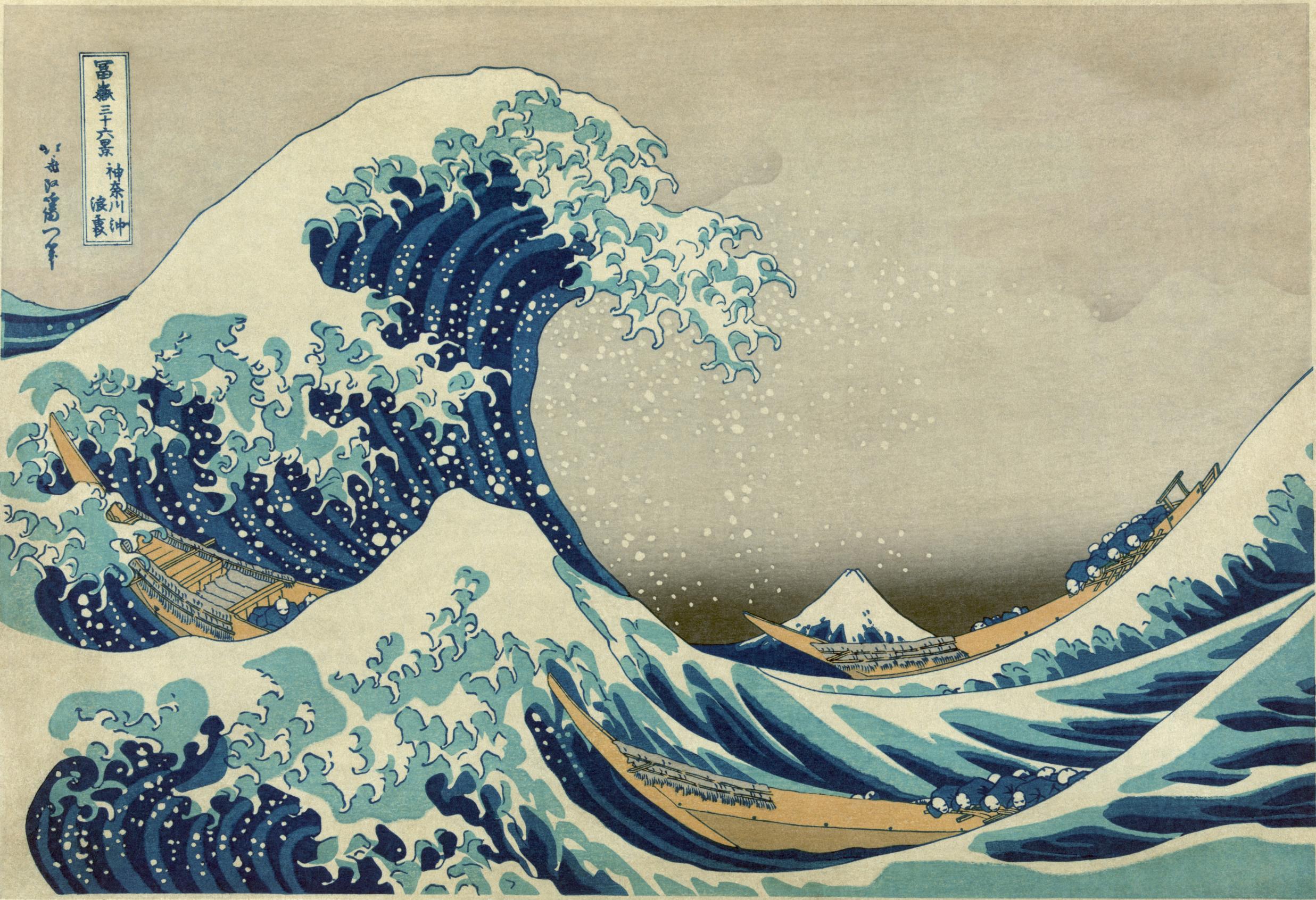 One of Hokusai’s finest works, this print from the Fuji series is arguably the
single most famous image in all Asian art. The horizon has been lowered to
emphasise the monstrous wave towering above, its impending crash of water
heightening a tension over the graceful lines of a diminutive Mt Fuji. This one
is from the collection of the Japan Ukiyo-e Museum, Matsumoto.
One of Hokusai’s finest works, this print from the Fuji series is arguably the
single most famous image in all Asian art. The horizon has been lowered to
emphasise the monstrous wave towering above, its impending crash of water
heightening a tension over the graceful lines of a diminutive Mt Fuji. This one
is from the collection of the Japan Ukiyo-e Museum, Matsumoto.
 Amida waterfall is one of the most stylised, visually intriguing and dreamlike
of all Hokusai’s creations. The waterfall derives its name from the most
popular Buddhist deity in Japan, Amida Nyōrai, whose rounded slender shoulders
and figure take a similar shape to the cascading water, and whose head, halo or
third eye is thought to have a similar shape to the form of the circular hollow
at the top of this print’s radical design.
Amida waterfall is one of the most stylised, visually intriguing and dreamlike
of all Hokusai’s creations. The waterfall derives its name from the most
popular Buddhist deity in Japan, Amida Nyōrai, whose rounded slender shoulders
and figure take a similar shape to the cascading water, and whose head, halo or
third eye is thought to have a similar shape to the form of the circular hollow
at the top of this print’s radical design.
 One of series entitled One Hundred Poems Explained by the Nurse, this
masterpiece of colour printing illustrates a poem by Sanji Hitoshi. Hokusai’s
innate sense of proportion marries well with his development of western-style
perspective; and figures of all kinds, at work and leisure, fed his insatiable
enthusiasm for depicting life in all its aspects.
One of series entitled One Hundred Poems Explained by the Nurse, this
masterpiece of colour printing illustrates a poem by Sanji Hitoshi. Hokusai’s
innate sense of proportion marries well with his development of western-style
perspective; and figures of all kinds, at work and leisure, fed his insatiable
enthusiasm for depicting life in all its aspects.


